Premium Only Content
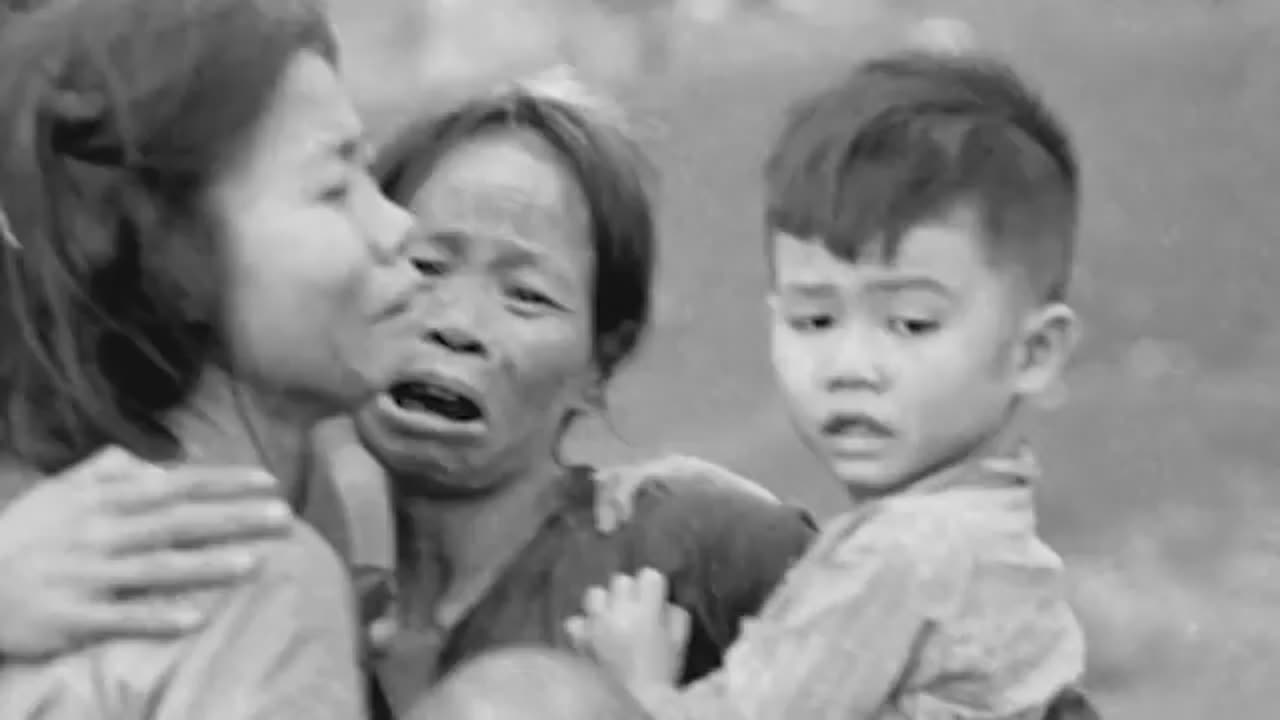
The My Lai Massacre - Short History Documentary Disturban History
https://www.youtube.com/watch?v=BolOJcZTWgw
The My Lai massacre claimed the lives of 504 Vietnamese civillians in one of the bloodiest crimes committed by American Troops during the Vietnam War. What makes this crime even more horrific was the way it was covered up by the military leadership. Without the efforts of brave soldiers who put a stop to the massacre and those who fought to bring it to the public's attention, it is likely the massacre would have been far worse or remained hidden.
The Vietnam War conjures images of the cruelty of war. It is a conflict that has been widely covered by film and forms part of our popular culture. It was a war that was widely reported on, with pictures and film of the effects of war being made accessible to the world. But some aspects of the war were hidden away from public view, at least for a time. The My Lai Massacre involved the murder of over 500 unarmed Vietnamese civilians, many of them were children. In today's video, we will cover the events leading up to the massacre, what happened on that day, and the aftermath. To understand the triggers of the My Lai Massacre, it is important to understand the situation at the time. In January of 1968, the North Vietnamese forces launched the Tet Offensive. Prior to this offensive, it was thought that the North Vietnamese forces were all but defeated. But this was proven to be a major underestimation. 80,000 soldiers of the North Vietnamese Army and Viet Cong struck key military and political targets all around the country. Although the South Vietnamese and their American allies managed to defeat the attacking communists, the effect on morale was disastrous. America had already deployed troops for the four preceding years, with an unpopular draft forcing people into the army. Any sign that the half a million troops stationed in Vietnam would be withdrawing any time soon disappeared almost overnight. In February of 1968, the United States suffered its highest death toll in a single week, over 500 dead. The Viet Cong's guerrilla tactics whittled down soldiers one by one, with the use of deadly traps, guerrilla tactics, and landmines. And these guerrilla soldiers would melt back into the jungle, often hiding amongst innocent civilians. Such was the experience of the soldiers of Charlie Company of the 11th Infantry Brigade. By March of 1968, 28 of their number were dead or wounded. This included soldiers killed by the Viet Cong snipers, by landmines, and by pitfall traps. In the same month, Charlie Company was to be deployed on a search and destroy mission in Son My. Search and destroy was a strategy widely used in the Vietnam War, where American soldiers would be quickly deployed, usually via helicopter, to locate enemy forces and kill them. The usual warfare of taking and holding land was never going to succeed against the Viet Cong forces, so American success was measured by the body count on such missions. Prior to the attack, the soldiers of Charlie Company were briefed by their captain, Ernest Medina. Captain Medina had previously tolerated a certain level of violence from the soldiers of Charlie Company, including using civilians as a means to detect mines and personally leading violent interrogations of prisoners. It is clear from these actions that the Vietnamese civilian population would dehumanize. Medina's orders were that every person in the villages were Viet Cong or Viet Cong sympathizers. That all innocent people should not be in that area. In a bid to disrupt Viet Cong resupply, all livestock and crops were ordered to be destroyed. They were told that the area was believed to be a stronghold for the North Vietnamese forces, and to expect resistance from a hardened battalion of Viet Cong soldiers. The trouble spot was nicknamed Pinkville, due to its supposed strong communist ties. Medina phrased this operation as a way for the soldiers to gain vengeance for the men they had lost in the conflict and to inflict heavy casualties on the Viet Cong. At around 7 AM, the soldiers of Charlie Company landed via helicopter outside of Son My, under the command of Medina and 2nd Lieutenant William Cayley. The plan was to make their way through various villages and search and destroy any resistance. As the soldiers approached, they came across women, children, and elderly residents of My Lai. There was no sign of a hardened battalion of Viet Cong. Not a single shot was fired at the approaching American soldiers. The villagers were in the process of cooking breakfast, working in the fields, and getting ready for the day. They were not concerned when the American soldiers arrived, and they just carried on as normal. The villagers were soon rounded up and separated into groups, whilst the soldiers searched for any sign of the Viet Cong or any weapons. Homes were ransacked in the search for any evidence of the enemy forces, though in the end, they found very little evidence. In total, only three old M1 Garand rifles were found, but not a single man of fighting age. Clearly, there was no sign of a large Viet Cong force hiding in the village. But what was found was deemed enough, with William Cayley ordering his men to start shooting, with the order, take care of them. Though some soldiers initially balked at the orders, with some refusing to fire, chaos soon erupted as Cayley reissued the order to start killing civilians. Whilst some refused to take part, enough followed the orders to begin the murderous rampage. The groups of elderly men, women, and children were forced into ditches and machine-gunned. At one point, Cayley interrogated a Buddhist monk as to the location of the Viet Cong. Unable to answer, he was shot and killed by Cayley. Mothers attempting to protect their children were gunned down. Their fleeing children were then targeted. According to those who witnessed the shootings, Cayley was said to have been convinced that the villagers were all booby-trapped with grenades or armed in some way. It did not matter at all that these people were holding children. Everyone was deemed to be a threat. According to Private Dennis Conti, the women of the village did all they could to protect their children. To quote him, he said, A lot of women had thrown themselves on top of the children to protect them, and the children were alive at first. Then the children who were old enough to walk got up, and Cayley began to shoot the children. Another witness to the massacre was Michael Bernhardt. As he entered the hamlet of Xomlang, the massacre was already underway. He said, I walked up and saw these guys doing strange things, setting fire to the huts, and waiting for the people to come out, and then shooting them. As I walked in, you could see the piles of people all through the village, all over. They were gathered up into large groups. I saw them shoot an M79 grenade launcher into a group of people who were still alive. But mostly, it was done with a machine gun. They were shooting women and children, just like anybody else. We met no resistance, and I only saw three captured weapons. We had no casualties. It was just like any other Vietnamese village. Old Papasans, women, and kids. As a matter of fact, I don't remember seeing one military-age male in the entire place, dead or alive. In one instance, Captain Medina, along with two other soldiers, found a young Vietnamese woman hiding in a ditch. When she emerged, hands raised, Medina shot and killed her. He would later defend his actions, as members of the Viet Cong would at times fake a surrender before revealing a pistol or grenade, and that he believed that this woman was armed. The woman was in fact unarmed, merely hiding from the American soldiers, shooting up her village. In addition to the mass murder, some soldiers engaged in SA-ing the women and young girls. It was reported that 20 women were victims of this, some as young as 13. Once the soldiers were finished, the victims were shot. By 11 AM, approximately 500 Vietnamese civilians had been killed. Medina ordered the soldiers of Charlie Company to stop for lunch, and radioed his superiors, telling them that the mission had been a success. He reported that 100 Viet Cong had been killed, with no American soldiers dead. The only American casualty was a soldier who had shot himself in the foot by accident. One of the survivors of the massacre was Pham Thi Thu An. She and her two daughters, aged 3 and 5, were forced into an interrogation ditch by the soldiers, she recalls the soldiers opening fire, reloading, and firing again. They attempted to look for any survivors before firing one final time and moving on. Somehow, Thu An and her daughters were all unharmed, and managed to keep quiet enough to avoid detection. They were the only survivors in the ditch, and climbed over the bodies of 170 of their neighbors. As the massacre raged below, Warrant Officer Hugh Thompson was flying a scout helicopter at low altitude, just above My Lai. He saw wounded civilians and marked their locations with smoke grenades, directing troops on the ground to assist the injured. After refueling, Thompson returned to My Lai and found the wounded villagers he had requested aid for had been killed. It was clear that these were not all combatants, as Thompson saw dead elderly men, children, and mothers with their infants. He landed near a ditch and inquired what was going on. A large group of villagers had been herded into a ditch and had been shot. Amongst the corpses, Thompson could see that there were still some alive, and so asked that the wounded be helped. The soldier he spoke to only said he was following orders, and that he would help the wounded out of their misery. As Thompson flew off, he saw the soldier firing into the ditch. He then saw soldiers moving in on a group of women and children hiding in a bunker. Realizing what was happening, Thompson landed his helicopter between the two groups. He then issued a remarkable order to his door gunner and his crew chief. Thompson was to leave the helicopter and try to speak to the American soldiers. If the soldiers were to open fire on the civilians, his helicopter crew were ordered to return fire on the rampaging US soldiers. Thompson managed to stop the soldiers from killing the civilians hiding in the bunker. The small group of villagers were then airlifted away, including a young girl who was rescued from a ditch of corpses. Thompson's constant calls for aid finally caught the attention of Lieutenant Colonel Frank Barker, who ordered Captain Medina to stop the killing. When Thompson returned to the forward base, he made his report detailing the murder of innocent civilians, but on April 24, 1968, Colonel Oren Henderson, commander of the 11th Infantry Brigade, drafted a report that insisted only 20 civilians had been unintentionally killed at My Lai. These deaths were attributed to either the opening artillery barrage or crossfire between American and Communist forces. The report declared that Thompson's report was a fabrication. As a result, Thompson was seen as a traitor and shunned by the military. He found himself sent on ever more dangerous missions, being shot down multiple times. Throughout his life, he received many death threats. Captain Medina began the cover-up shortly after the massacre had concluded. He falsely claimed that when the soldiers of Charlie Company first entered the village, there were Viet Cong soldiers who quickly fled. When he was quizzed on the inconsistencies between the vast numbers killed and only three weapons found, Medina lied to the division's commander, General Kostner, that the initial artillery strike had killed only 20 civilians. It is believed that Kostner was not concerned greatly with his field duties, seeing a combat position as necessary to climb further up the ranks. Instead, Kostner avoided the directives from the Military Assistance Command. Instead, Kostner avoided the directives from the Military Assistance Command that accusations of war crimes were to be forwarded to the staff judge advocate in Saigon, and drew a line under the incident, merely reminding Medina to keep up the rules of engagement in the future. Thankfully, this was not the end of the matter. By late April of 1968, Ronald Reidenhower, a helicopter door-gunner, heard rumors of what had happened at My Lai. Ronald had trained with the soldiers of Charlie Company, and had started his own unofficial investigation of the massacre, and began interviewing the soldiers who were there. On his return to the United States, Ronald mailed a report of his findings to the members of Congress, the Pentagon, and others in Washington. His letter sparked an official investigation into both the massacre itself and the cover-up. Ronald, Medina, Thompson, and Calley were all interviewed. In September of 1969, Calley was charged with the murder of 109 Vietnamese civilians. At Calley's trial, many soldiers who took part in the massacre did not testify, citing the Fifth Amendment on self-incrimination. Calley was initially sentenced to life imprisonment and hard labor, but following a series of appeals and political interventions, this sentence was reduced. In addition, President Nixon ordered that Calley serve his sentence under house arrest at Fort Benning. In total, Calley served three years. No other American soldier or officer was ever convicted for their role in the My Lai massacre. Many of them were able to rely on the Nuremberg defense of, I was just following orders. The aftermath of the massacre was truly shocking. 504 Vietnamese civilians were dead. Of those who died, around 200 were children, with around 50 being under the age of three. People returning to the village from the market fields or jobs found their family members lying dead in ditches and along the roads. After the My Lai story was uncovered by the freelance journalist Seymour Hersh, the opposition to the Vietnam War only increased. No longer seeing the American soldiers as victims of a cruel war, they were now seen as its perpetrators, often called baby killers. Calley's trial was a turning point. For the first time since the war began, most of the American population believed that the war was unjust. Calley was seen as the typical American soldier in Vietnam, which resulted in once-respected soldiers on their return home being shunned, tarred, with the same brush. The Vietnam War continued for another five years, with the escalation of the war often kept secret from the American public, who had largely turned against the war. In 1998, Thompson and his crew, which consisted of Lawrence Colburn and his crew chief Glenn Andriotta, were finally recognized for the lives they saved, and they were awarded the Soldier's Medal for their acts of extraordinary bravery, not involving contact with the enemy. Had Thompson not intervened, it is widely regarded that Calley Company's rampage could have continued to the rest of the hamlets in the area, resulting in the deaths of many more innocent civilians. The My Lai Massacre is perhaps the most well-known atrocity committed by the American forces in Vietnam. The subsequent attempt to cover up, combined with only Calley convicted, has led some people to believe that he was but a scapegoat for the larger failings of the military leadership. The systematic approach to covering up the massacre, with a reluctance to follow a proper procedure on reporting such massacres, were never fully accounted for. Whilst there should be no excuse for soldiers following illegal orders to massacre civilians, it is hard to separate the mental condition of the soldiers, or the type of war they were fighting, from their actions. These were ordinary soldiers, with no previous or subsequent convictions of violent offenses. Yet on this day, they were capable of wholesale slaughter of innocent people. One potential explanation is that Calley was just a sadistic individual who was able to exploit the situation and his authority to commit crimes against innocent civilians for his own reasons of vengeance. That Calley was able to abuse his authority to force otherwise good men, worn down by the war, to commit such heinous crimes is another. I do not think there is an easy way to answer why the massacre happened, but any explanation cannot ignore the effects of war on the human mind, and the process of dehumanization of those considered other. The lack of leadership shown by those attempting to cover up the massacre needs to be remembered, but so does the bravery of Thompson and his crew, who put themselves in the path of murderous soldiers to save the innocent people that they didn't even know. And what also deserves to be remembered is the determination of Ridenhauer, and his efforts to bring the massacre and the cover-up to the public's attention. But most of all, the victims of the My Lai Massacre deserve to be remembered. These people were innocent, and their deaths should never have happened. I think it's fitting to end this video with a conversation that Thompson had with a survivor that he met on the 30th anniversary of the massacre. She asked Thompson, Why didn't the people who committed these acts come back with you so we could forgive them? The capacity to forgive, but never forget what happened, is a difficult concept, but it is something that this woman was able to do. It is only through trying to understand why such horrible crimes are committed can we hope to avoid them ever happening again.
-
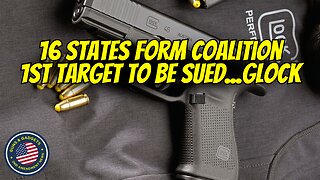 8:08
8:08
Guns & Gadgets 2nd Amendment News
1 day ago16 States Join Forces To Sue Firearm Manufacturers Out of Business - 1st Target = GLOCK
25.3K27 -
 10:17
10:17
Dermatologist Dr. Dustin Portela
1 day ago $3.56 earnedOlay Cleansing Melts: Dermatologist's Honest Review
30.7K -
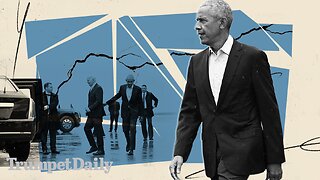 1:02:20
1:02:20
Trumpet Daily
1 day ago $13.05 earnedObama’s Fake World Comes Crashing Down - Trumpet Daily | Dec. 20, 2024
16.5K18 -
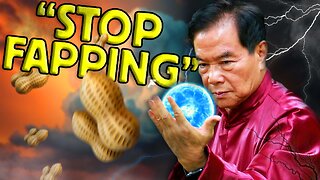 6:29
6:29
BIG NEM
18 hours agoCultivating God Mode: Ancient Taoist NoFap Practices
14.3K4 -
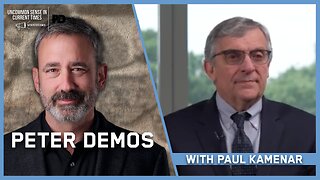 30:53
30:53
Uncommon Sense In Current Times
1 day ago $0.88 earned"Pardon or Peril? How Biden’s Clemency Actions Could Backfire"
14.9K -
 40:01
40:01
CarlCrusher
16 hours agoSkinwalker Encounters in the Haunted Canyons of Magic Mesa - ep 4
22.4K2 -
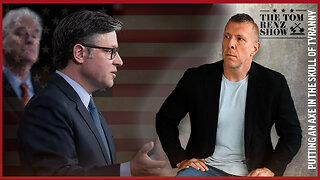 59:44
59:44
PMG
1 day ago $2.20 earned"BETRAYAL - Johnson's New Spending Bill EXPANDS COVID Plandemic Powers"
38K9 -
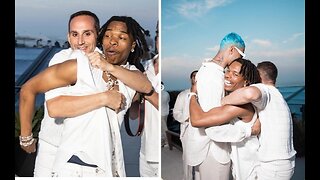 6:48:50
6:48:50
Akademiks
15 hours agoKendrick Lamar and SZA disses Drake and BIG AK? HOLD UP! Diddy, Durk, JayZ update. Travis Hunter RUN
161K28 -
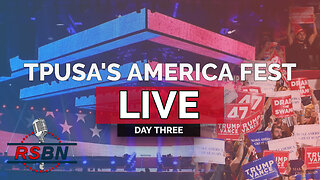 11:45:14
11:45:14
Right Side Broadcasting Network
9 days agoLIVE REPLAY: TPUSA's America Fest Conference: Day Three - 12/21/24
345K28 -
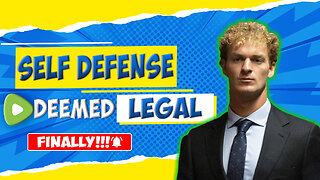 12:19
12:19
Tundra Tactical
15 hours ago $12.90 earnedDaniel Penny Beats Charges in NYC Subway Killing
66.1K12